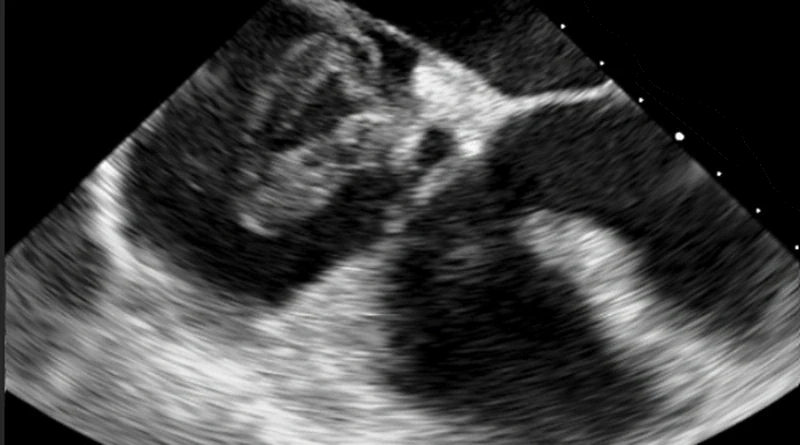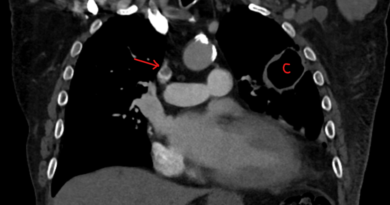Clot in Transit
A clot in transit is a free floating venous thrombosis. The most common location to find it will be in the right ventricle. Sometimes a clot in transit will straddle a patent foramen ovale. Importantly, these clots are different than right heart clots that are adherent to the heart wall or to a catheter.
Diagnosis
The diagnosis of a clot in the right heart is usually made with echocardiogram. Practically, it is usually a transthoracic echocardiogram. Sometimes we make the diagnosis on CT scans that we obtain when we suspect pulmonary embolism.

Outcome
There is not much literature about clots in transit. But it seems that patient outcomes when there is pulmonary embolism and a clot in transit is worse than isolated pulmonary emboli.
A European group published their multi-center cohort of 138 patients with right heart clots. They compared them to propensity matched patients. Overall, PE-related mortality at 30 days was higher in the right heart clot group (19% vs. 8%).
Clot in Transit Treatment
In theory treatment options include anticoagulation, thrombolysis, catheter suction thrombectomy and surgical embolectomy. Of course, in practice, we will always tailor treatment to a specific patient’s needs. These tend to be group decisions. Factors to consider include:
- Hemodynamic and respiratory status
- Right heart size and function and right ventricular systolic pressure
- Clot burden in the lungs
- Size of clot in transit
In 2015 a series of 328 patients with pulmonary embolism and right heart clots was published in vascular medicine journal. Overall mortality was high, 23.2%. But, patients who received either thrombolysis or surgical embolectomy did much better than patients who received anticoagulation. In fact, in a multivariate analysis, thrombolysis offered an odds ratio of 4.83 for improved outcomes.
A different group pooled results from published case reports and case series of right heart clots over 60 years. For 316 patients, they showed that thrombolysis offered an odds of 2.72 of improved mortality compared to anticoagulation.
Angiovac suction thrombectomy is a treatment option for right heart thrombi. Moriarty et al. published the procedural characteristics and outcomes of treating 47 patients with right heart thrombi. They used the RAPID registry which is an Angiovasc registry. Meaningful clot removal was achieved in about 59% of patients. Almost 13% of patients experienced a side effect including distal emboli and bleeding. A different publication from the same registry pointed to possibly better results with inferior vena cava clots.




Pingback: Blood Clot Diagnosis: From Symptoms to Testing
Pingback: Pulmonary Embolism Response Team